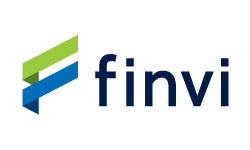Source: site
 Gen Z credit volatility and student loan repayment resumption present new challenges for consumers as well as the ARM industry.
Gen Z credit volatility and student loan repayment resumption present new challenges for consumers as well as the ARM industry.
Gen Z consumers are experiencing unprecedented credit score volatility, according to the latest FICO Score Credit Insights report. With an average score of 676 — 39 points below the national average — Gen Z borrowers saw a three-point year-over-year decrease, the largest decline of any demographic group and the steepest drop for any age cohort since 2020.
More significantly, 14.1% of Gen Z consumers experienced 50-plus-point score decreases over the past year, more than double the rate observed in 2021. This volatility reflects both limited credit histories and disproportionate exposure to economic headwinds including inflation, higher interest rates, and the resumption of student loan payments.
Notably, 34% of Gen Z consumers carry student loans — double the 17% rate for the general population.
The resumption of federal student loan delinquency reporting in February 2025 added 6.1 million consumers with newly reported delinquencies in just three months, representing 3.1% of the total scorable population. These borrowers experienced an average 69-point credit score drop, with 25% losing more than 100 points.
“If you look at the delinquency rate for student loans, they call it a ‘hockey stick.’ It’s just straight up,” J. Michael Collins, professor of public affairs and human ecology at the University of Wisconsin-Madison, told Wisconsin Today. “There’s a real shock that people are facing in managing their credit.”
While acknowledging the FICO report’s findings, Collins noted an important caveat about the Gen Z data: borrowers under 30 have historically represented a demographic of concern.
“It’s part of being a young adult and adjusting to managing credit. They’re just more likely to have instability in their employment. They’re trying to juggle maybe starting a family or going to school. All those things make it a riskier population,” he said, according to Wisconsin Public Radio.
Payment Hierarchy Shifts & Delinquency Trends
The report documents a reordering of consumer payment priorities. Student loans have fallen to the bottom of the payment hierarchy for the first time, with consumers now prioritizing auto loans, mortgages, personal loans, and bankcards ahead of student loan obligations when financial constraints force difficult choices.
The national average FICO Score decreased two points to 715, driven by increased utilization rates and rising delinquencies. Overall delinquency rates increased from 7.9% in April 2024 to 9.8% in April 2025 — a 25% relative increase. Credit card utilization climbed to 35.5%, up from 29.6% in 2021, as consumers increasingly rely on revolving credit to manage affordability pressures.
Bankcard delinquency rates stabilized at 11.7% after increasing 48% since 2021, though they remain above pre-pandemic levels of 10.3%. Auto loan delinquency rates also stabilized after several years of increases, standing at 7.3% — still below pre-pandemic levels but up 24% since 2021.
Mortgage delinquency rates continued climbing to 4.7%, up 64% since 2022, though remaining well below Great Recession levels. Personal loan delinquencies declined for the first time since 2021, dropping to 6.1%, as lenders tightened underwriting standards following recent peak delinquency periods.
Lower-scoring consumers across all products showed the most significant balance increases. Personal loan balances for lower-scoring consumers jumped 48% since 2019, compared to just 20-22% for higher-scoring groups.




 Gen Z credit volatility and student loan repayment resumption present new challenges for consumers as well as the ARM industry.
Gen Z credit volatility and student loan repayment resumption present new challenges for consumers as well as the ARM industry.